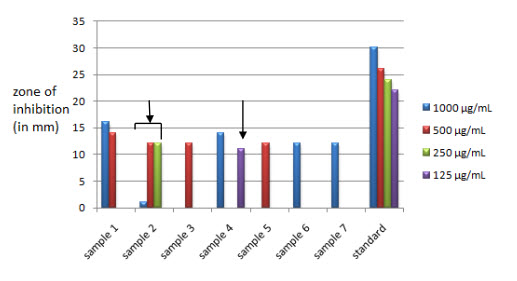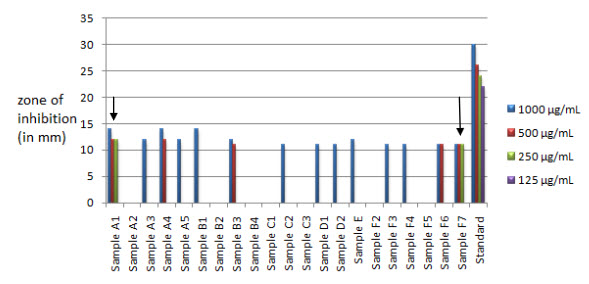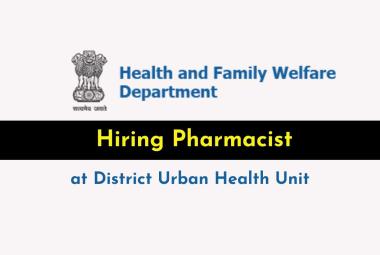About Authors:
Sarepaka a.*1, Dhamodaran p.1, Singh a.2, Nilani P.1, Duraiswamy B1
1Department of Pharmacognosy, JSS College of Pharmacy, Ootacamund, Tamilnadu, India 643001
2Department of Pharmaceutical Chemistry, JSS College of Pharmacy, Ootacamund, Tamilnadu, India 643001
*sarepaka.aparna@yahoo.in
Abstract:
World Health Organisation (WHO) recommends The Directly Observed Treatment Short-course (DOTS) strategy of tuberculosis (TB) treatment which includes a course of first line as well as second line antibiotics. Unfortunately, from nearly the moment drugs became available for the treatment of TB, resistance became a problem.[1] Also, the price of these medications is high; thus poor people in the developing world have no or limited access to these treatments.[2] Herbal treatment, however, presents the potential to provide an affordable, available, culturally relevant method to manage tuberculosis. Currently, botanicals are the most competent way to bridge the gap between isolated developing cultures and modern science.[3] As botanicals attain a more prominent role in modern health care, the quality, safety and activity of these products must be assessed. The tribal medicinal men of Nilgiris district use commonly available plants for the treatment of tuberculosis. In this study, we evaluated five such plants for their antitubercular activity in vitro, namely,Withania somnifera, Allium cepa, Zingiber officinale, Glycyrrhiza glabra andAsparagus racemosus, individually as well as in combination. The results revealed that the combination of these extracts have significant inhibitory effect Mycobacterium tuberculosis growth.
Reference Id: PHARMATUTOR-ART-1976
Introduction:
An estimated one-third of the world’s population tests positive for Mycobacterium tuberculosis, the pathogen for tuberculosis. Of these, 8.8 million develop the disease annually.[3] The population burst, endemism in developing countries and drug resistance make TB a fairly difficult condition to manage. Patients in developing have limited or no access to TB medication owing to high cost of the treatment. The tribal medicinal practitioners of the Nilgiris district. As per the latest statistics, the WHO estimates that up to 80 percent of the world now relies on medicinal plants as their main source of health care.[5] Owing to the birth of herbal medicine from the natural flora, it has seemed to have had a better psychological relationship with the patients compared to the synthetically produced drugs. The objective of this study was to scientifically validate the claim of the tribal medicinal man that commonly available known plants have anti tubercular activities. The medicinally active parts of Withania somnifera, Allium cepa, Zingiber officinale, Glycyrrhiza glabra andAsparagus racemosus were subjected to extraction techniques and the extracts were subjected to in vitro antitubercular screening.
Materials and Methods:
Plant collection
Withania somnifera, Allium cepa, Zingiber officinale, Glycyrrhiza glabra and Asparagus racemosus was collected in the time between May and august and authenticated. The medicinally active parts of the plant namely Withania somnifera (roots), Allium cepa (bulbs), Zingiber officinale (rhizomes), Glycyrrhiza glabra (stolons) and Aspragaus racemosus (roots) were collected, dried and subjected to extraction. The following extracts were obtained : ethanolic and acetone extracts Zingiber officinale, ethanolic extracts of Glycyrrhiza glabra, methanolic extract of Allium cepa, ethyl acetate and acetone extracts of Withania somnifera, and hydroalcoholic extract of Asparagus racemosus.
Antitubercular assay
Mycobacterium tuberculosis H37Rv (ATCC 27294)cultures were maintained on Middlebrook 7H11 Media slant at 37 °C. After 21 days of incubation bacterial cells were scraped from slants and diluted to obtain a growth index of approximately 1×106 cfu/mL. This was used as inoculum. [6] The extracts were diluted using DiMethyl SulphOxide (DMSO) to obtain concentrations of 1000,500,250 and 125 µg/mL. Agar diffusion studies were conducted using sterilised petri plates using Isoniazid as standard drug. The extracts were tested for their antitubercular activity individually and then in equal ratio combination. The plates were kept for diffusion and placed in negative air pressure chamber, in a 5-10% CO2 atmosphere at 37 °C for 4 days and the zone of inhibition measured.
Results and Discussion:
The agar diffusion studies for determining the antitubercular activity of the extracts, individually, revealed that methanolic extract of Allium cepa inhibited tubercular growth at concentrations as low as 125 µg/mL (Table 1). Acetone extract of Zingiber officinale and ethyl acetate extract of Withania somnifera showed inhibition at not more than 500 µg/mL. Ethanolic extract of Glycyrrhiza glabrahas established antitubercular activity [7] and showed good inhibition of tubercular growth at 1000,500 and 250 µg/mL. All the extracts showed considerable antitubercular activity when compared to standard drug, Isoniazid. (Fig. 1)
Table 1. Table showing the effect of the ethanolic and acetone extracts Zingiber officinale, ethanolic extracts of Glycyrrhiza glabra, methanolic extract of Allium cepa, ethyl acetate and acetone extracts of Withania somnifera, and hydroalcoholic extract of Asparagus racemosus individually against M.tuberculosis
|
|
Standard (INH) |
1 |
2 |
3 |
4 |
5 |
6 |
7 |
|
Zone of inhibition (mm) |
|
|
|
|
|
|
|
|
|
Conc. 1000 µg/mL |
30 |
16 |
16 |
- |
14 |
- |
12 |
12 |
|
500 µg/mL |
26 |
14 |
14 |
12 |
- |
12 |
- |
- |
|
250 µg/mL |
24 |
- |
12 |
- |
- |
- |
- |
- |
|
125 µg/mL |
22 |
- |
- |
- |
11 |
- |
- |
- |
Where
1 denotes ethanolic extract of Zingiber officinale
2 denotes ethanolic extract of Glycyrrhiza glabra
3 denotes acetone extract of Zingiber officinale
4 denotes methanolic extract of Allium cepa
5 denotes ethyl acetate extract of Withania somnifera
6 denotes acetone extract of Withania somnifera
7 denotes hydroalcoholic extract of Asparagus racemosus
Fig.1 Figure showing the zone of inhibition the ethanolic and acetone extracts Zingiber officinale, ethanolic extracts of Glycyrrhiza glabra, methanolic extract of Allium cepa, ethyl acetate and acetone extracts of Withania somnifera ,and hydroalcoholic extract of Asparagus racemosus individually against M. tuberculosis

Combinations of the extracts were prepared using two extracts at a time in equal ratios, to give the following combinations:
Combination A
A1 ethanolic extract of Zingiber officinale + ethanolic extract of Glycyrrhiza glabra
A2 ethanolic extract of Zingiber officinale + acetone extract of Zingiber officinale
A3 ethanolic extract of Zingiber officinale + methanolic extract of Allium cepa
A4 ethanolic extract of Zingiber officinale + ethyl acetate extract of Withania somnifera
A5 ethanolic extract of Zingiber officinale + acetone extract of Withania somnifera
Combination B
B1 ethanolic extract of Glycyrrhiza glabra + acetone extract of Zingiber officinale
B2 ethanolic extract of Glycyrrhiza glabra + methanolic extract of Allium cepa
B3 ethanolic extract of Glycyrrhiza glabra + ethyl acetate extract of Withania somnifera
B4 ethanolic extract of Glycyrrhiza glabra + acetone extract of Withania somnifera
Combination C
C1 acetone extract of Zingiber officinale + methanolic extract of Allium cepa
C2 acetone extract of Zingiber officinale + ethyl acetate extract of Withania somnifera
C3 acetone extract of Zingiber officinale + acetone extract of Withania somnifera
Combination D
D1 methanolic extract of Allium cepa + ethyl acetate extract of Withania somnifera
D2 methanolic extract of Allium cepa + acetone extract of Withania somnifera
Combination E
ethyl acetate extract of Withania somnifera + acetone extract of Withania somnifera
Combination F
F2 hydroalcoholic extract of Asparagus racemosus +ethanolic extract of Zingiber officinale
F3 hydroalcoholic extract of Asparagus racemosus+ethanolic extract of Glycyrrhiza glabra
F4 hydroalcoholic extract of Asparagus racemosus + acetone extract of Zingiber officinale
F5 hydroalcoholic extract of Asparagus racemosus + methanolic extract of Allium cepa
F6 hydroalcoholic extract of Asparagus racemosus+ethyl acetate extract of Withania somnifera
F7 hydroalcoholic extract of Asparagus racemosus + acetone extract of Withania somnifera
The agar diffusion studies for determining the antitubercular activity of the extracts, in combination, ( Table 2) revealed that inhibition at low concentrations were observed in combinations A1 (ethanolic extract of Zingiber officinale + ethanolic extract of Glycyrrhiza glabra) and F7 (hydroalcoholic extract of Asparagus racemosus + acetone extract of Withania somnifera). The extract giving best results in combination was hydroalcoholic extract of Asparagus racemosus. (Figure 2)
Table 2. showing the effect of equal ratios of theethanolic and acetone extracts Zingiber officinale, ethanolic extracts of Glycyrrhiza glabra, methanolic extract of Allium cepa, ethyl acetate and acetone extracts of Withania somnifera, and hydroalcoholic extract of Asparagus racemosus in combination against M. tuberculosis
|
Sample |
Concentration (µg/mL) |
|||
|
|
1000 |
500 |
250 |
125 |
|
A |
Zone of inhibition (mm) |
|||
|
A1 |
14 |
12 |
12 |
- |
|
A2 |
- |
- |
- |
- |
|
A3 |
12 |
- |
- |
- |
|
A4 |
14 |
12 |
- |
- |
|
A5 |
12 |
- |
- |
- |
|
B |
|
|||
|
B1 |
14 |
- |
- |
- |
|
B2 |
- |
- |
- |
- |
|
B3 |
12 |
11 |
- |
- |
|
B4 |
- |
- |
- |
- |
|
C |
|
|||
|
C1 |
- |
- |
- |
- |
|
C2 |
11 |
- |
- |
- |
|
C3 |
- |
- |
- |
- |
|
D |
|
|||
|
D1 |
11 |
- |
- |
- |
|
D2 |
11 |
- |
- |
- |
|
E |
12 |
- |
- |
- |
|
F |
|
|||
|
F2 |
- |
- |
- |
- |
|
F3 |
11 |
- |
- |
- |
|
F4 |
11 |
- |
- |
- |
|
F5 |
- |
- |
- |
- |
|
F6 |
11 |
11 |
- |
- |
|
F7 |
11 |
11 |
11 |
- |
Figure 2. Figure showing the zone of inhibition theethanolic and acetone extracts Zingiber officinale, ethanolic extracts of Glycyrrhiza glabra, methanolic extract of Allium cepa, ethyl acetate and acetone extracts of Withania somnifera, and hydroalcoholic extract of Asparagus racemosus in combination againstM.tuberculosis

Conclusion:
The antitubercular activity of the extracts of the plants Withania somnifera (roots), Allium cepa (bulbs), Zingiber officinale (rhizomes), Glycyrrhiza glabra (stolons) and Asparagus racemosus (roots) was found to be effective individually as well as in combination. Crude extract of Glycyrrhiza glabra (stolons) has an established antitubercular activity and was found to be effective in combination as well. Hydroalcoholic extract of Asparagus racemosus (roots) showed most significant results individually as well as in combination with other extracts. These plants are commonly available known plants; hence, their procurement for further studies on possibly isolated constituents is relatively convenient.
Acknowledgements:
Authors wish to thank the Department of Pharmaceutical Biotechnology, JSS College of Pharmacy, Ootacamund; the Management, JSS Mahavidyapeetha, Mysore and the Principal, JSS college of Pharmacy, Ooty for providing necessary facilities. Authors also thank Institute of Microbial Technology, Chandigarh, for their valuable guidance in the tubercular testing phase of the project.
References:
1. Dormandy, T., The White Death: A History of Tuberculosis. ed.; NYU Press: New York, 2000. 433
2. Chan, E.D., Iseman, M.D., 2002. Current medical treatment for tuberculosis. British Medical Journal 325, 1282–1286
3. Kaptchuk, T. J.; Eisenberg, D. M., The persuasive appeal of alternative medicine. Annals of Internal Medicine 1998. 129; 12:1061-1065.
4. TB/HIV in the South-East Asia Region Status Report on October 2009 at Regional Meeting of National Tuberculosis Programme Managers, WHO/SEARO, New Delhi, India, 2-5 November 2009.
5. Eisenberg, D. M.; Davis, R. B.; Ettner, S. L.; Appel, S.; Wilkey, S.; van Rompay, M.; Kessler, R. C., Trends in alternative medicine use in the United States, 1990-1997 - Results of a follow-up national survey. Journal of the American Medical Association 1998.280; 18:1569-1575
6. Petersdorf, R.G., Sherris, J.C., 1965. Methods and significance of in vitro testing of bacterial sensitivity to drugs. American Journal of Medicine 39, 766.
7. Vivek K. Gupta, Atiya Fatima, Uzma Faridi, Arvind S. Negi, Karuna Shanker, J.K. Kumar, Neha Rahuja, Suaib Luqman, Brijesh S. Sisodia , Dharmendra Saikia , M.P. Darokar, Suman P.S. Khanuja.Antimicrobial potential of Glycyrrhiza glabra roots. J. Ethnopharmacol.2008; 116: 377–380
NOW YOU CAN ALSO PUBLISH YOUR ARTICLE ONLINE.
SUBMIT YOUR ARTICLE/PROJECT AT articles@pharmatutor.org
Subscribe to Pharmatutor Alerts by Email
FIND OUT MORE ARTICLES AT OUR DATABASE









